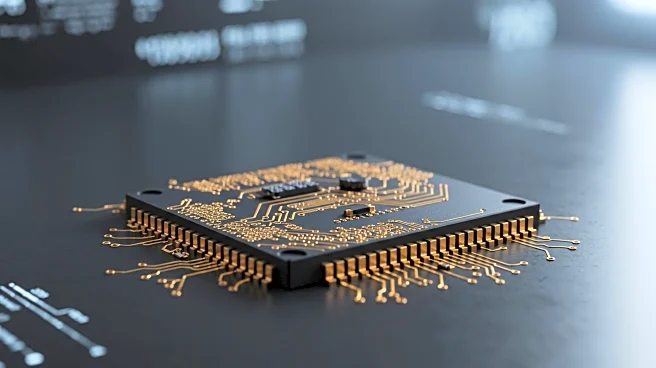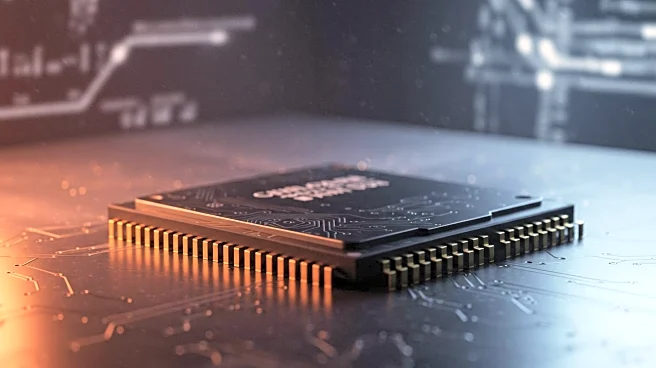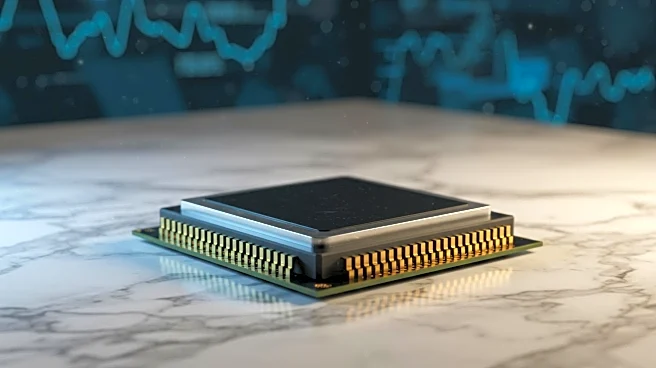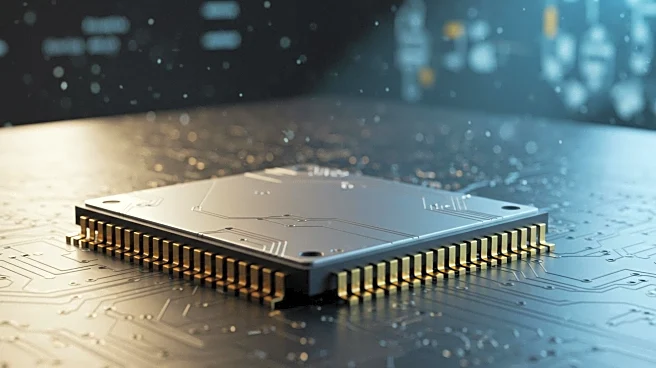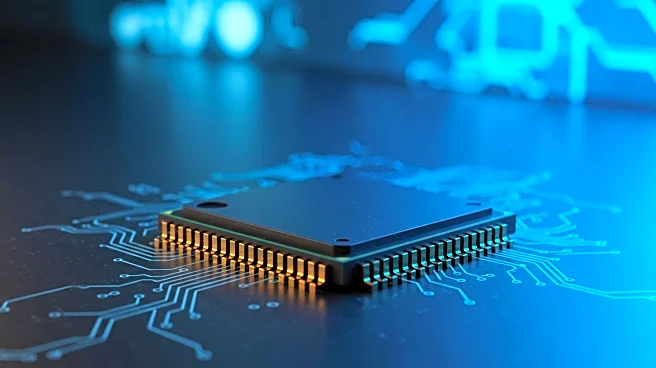What's Happening?
Intel has agreed to give the U.S. government a 10% stake in its business, as announced by the company and President Trump. This agreement follows the administration's demand for an equity stake in exchange for grants under the CHIPS and Science Act. The U.S. government will receive 433.3 million shares, representing a 9.9% stake, amounting to an $8.9 billion investment. This includes $5.7 billion in grants and $3.2 billion from the Secure Enclave program. The investment is intended to strengthen U.S. leadership in semiconductors. However, the government's stake will be passive, with no board representation or governance rights.
Why It's Important?
The acquisition of a stake in Intel by the U.S. government is a significant step in bolstering the domestic semiconductor industry. This move is part of a broader strategy to enhance U.S. technological leadership and reduce dependency on foreign manufacturers. The investment aligns with the objectives of the CHIPS and Science Act, which aims to support the U.S. semiconductor sector. However, the decision has sparked debate about the implications of government involvement in private enterprises. Critics argue that it could lead to increased political influence over business decisions, potentially affecting Intel's long-term viability.
Beyond the Headlines
The government's stake in Intel raises questions about the balance between public and private sector roles in strategic industries. This move could set a precedent for future government investments in private companies, particularly in sectors deemed critical for national security. The decision also highlights the challenges faced by U.S. companies in competing with international giants like TSMC and Samsung. As the semiconductor industry evolves, the role of government support and intervention will be a key topic of discussion among policymakers and industry leaders.


